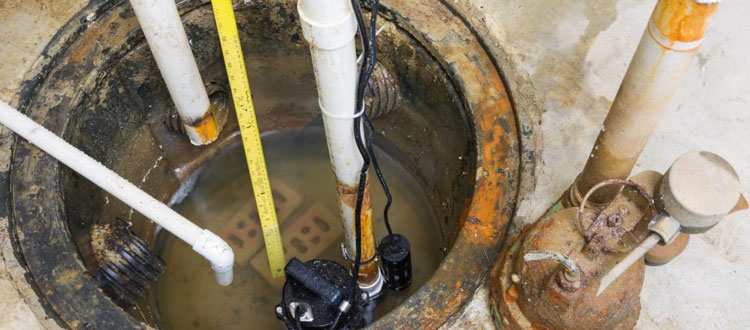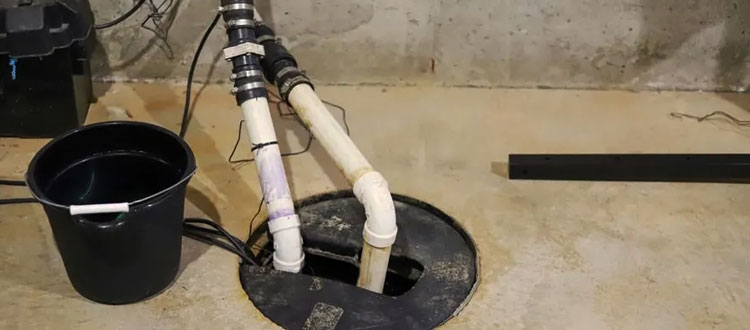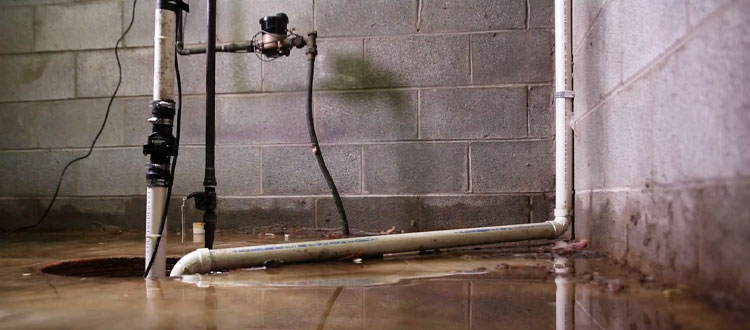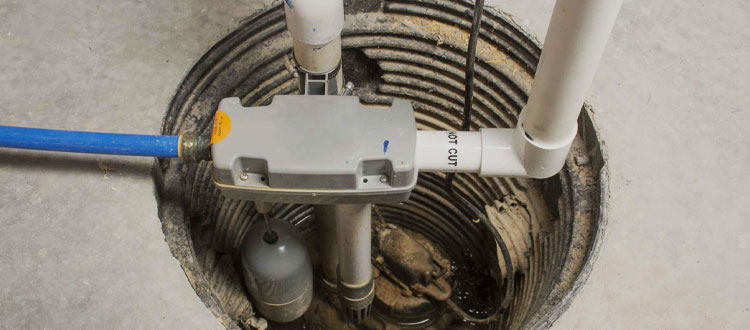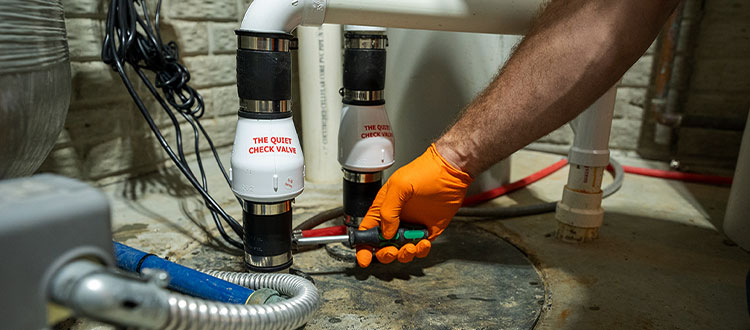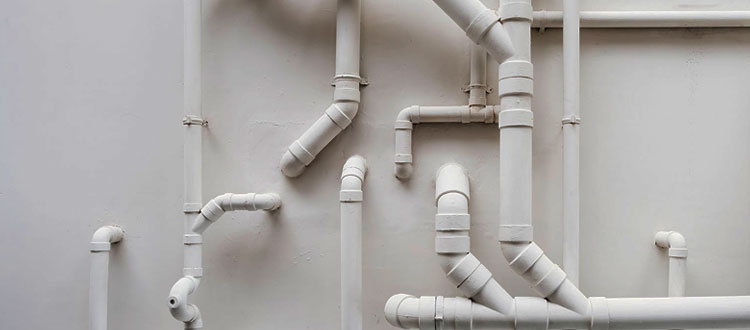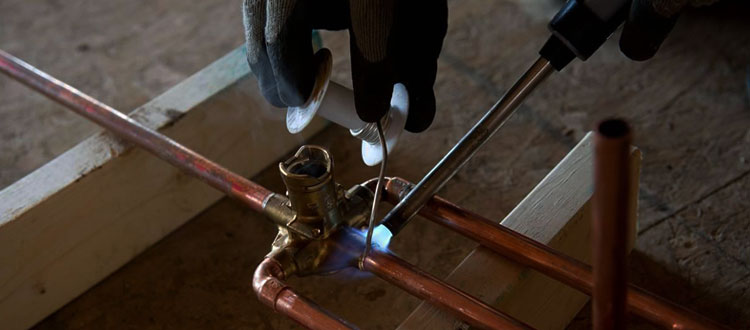Which Sump Pump Repair Related Mistakes You Should Avoid to Make Your Sump Pump Repair Much More Effective
Sump Pump Repair in Bucks County PA
Having the right sump pump system in your home can help prevent flooding and water damage. However, like any plumbing system, your sump pump can experience a breakdown. Fortunately, catching a malfunction in its early stages can save you time and money in the long run. It’s important to perform regular inspections of your sump pump and understand the warning signs to look out for so that you can schedule a professional plumber in Bucks County PA quickly. Below are some of the most common sump pump repair mistakes homeowners make that can lead to serious problems down the line.
The first thing you should do when your sump pump stops working is to check for a power outage or a tripped circuit breaker. If there’s no problem with these, try resetting the circuit breaker and ensuring that the sump pump is plugged in properly. After that, listen to the motor and check the discharge pipe for clogs or a stuck switch. If you can’t find anything wrong with these, then it could be a problem with the float switch, which needs to have ample room to float freely in order to work properly.
You should also inspect your discharge pipe regularly to see if there’s any visible buildup. This can clog the pump and cause it to overflow. A reputable plumbing company can help you avoid this by using gravel and large rocks instead of loose silt to keep the pump from getting clogged with debris. They can also install the sump pump on a solid brick surface to ensure it stays stable and doesn’t get damaged by heavy vehicles driving over it.
Lastly, your sump pump discharge pipe must have a check valve that prevents the water from back-flowing into your basement once it’s been pumped out. If this valve isn’t working, the sump pump will constantly run and eventually burn out. It’s easy to check the integrity of this valve by removing the cover from your sump pump and pouring water into it until you hear a loud, hissing sound.
Another common mistake homeowners make is hiring a non-experienced plumber to install their sump pump system. This can lead to a number of problems, including constructing the pit too small or leaving it without a vent hole. The best way to avoid this mistake is to hire a experienced and certified plumbing company in Bucks County PA that provides services in your area.
It is also important to regularly clean your sump pump. Debris such as dirt, silt and leaves can build up in the pump, causing it to overflow. This can also clog the discharge line, and if the pump’s motor is too powerful for the drainage pipe, it may overheat and break down. By regularly cleaning and inspecting the sump pump, you can catch these problems before they become major issues that threaten your basement. It is also important to hire a reputable plumber in Bucks County PA for regular sump pump maintenance service in Bucks County PA so that they can fix any problems before they turn into big disasters.
How You Can Select the Right Sump Pump Repair Company in Your Local Area of Philadelphia PA
Sump Pump Repair Specialists in Philadelphia PA
In the basement of your home, or in a crawl space, sump pumps remove excess water and prevent flooding, which can cause damage to furniture and other items stored in the area. They also reduce the risk of structural damage and mold growth. As such, waterproofing professionals consider them a must-have when working on a basement or crawl space to keep it dry. But not all sump pumps are created equal, and finding the right one can be difficult. This article discusses how you can select the right sump pump repair company in Philadelphia PA to get the job done right.
Sump Pump Installation Services in Philadelphia PA
When installing a new sump pump, a waterproofing contractor will choose the lowest point in the basement or crawl space. This is where the water will naturally collect, and the sump pit will be installed there. The pit is connected to the pump via a discharge line, which leads it to another location, such as the nearest storm drain. A sump pump installation also includes a basket to catch the water, and a pump with a motor and float switch.
Sump Pump Repair Technician in Philadelphia PA
Once the sump pump is installed, regular maintenance will help ensure it remains in good condition. Checking the pump for blockages is an important task, as it will keep the pit clear and allow the float to work correctly. It is also a good idea to test the pump by allowing water into the basin and waiting for it to activate. It should do so within a minute and drain the area, ensuring it is working properly. In addition, the waterproofing contractor should install a backup system that can activate when the primary sump pump fails.
There are a number of reasons why your sump pump may be failing. For instance, if the float switch malfunctions or the motor burns out, it will not activate when needed. Other common issues include a lack of power, an electrical problem, or rust and corrosion. If your sump pump is not operating as it should, a waterproofing contractor will inspect the pump and determine the cause of the issue.
A Sump Pump With a Battery Backup
Many sump pumps are powered by electricity, which can fail during heavy rainstorms or if the sump pump itself is damaged by flooding. A battery backup can provide an alternative source of energy, which is especially useful for homes in flood zones. Additionally, a monitoring system can provide critical alerts in the event that the primary pump is down or has lost power.
Waterproofing contractors are experts at installing and repairing sump pumps, and they can offer a wide variety of solutions for basements and crawl spaces. They can install a submersible or pedestal pump, depending on your preferences and budget. They will also ensure the system is located in the correct place, ideally at the lowest point of the foundation. And they will help you create a regular maintenance plan to keep the pump in good working order.
Sump Pump Troubleshooting Tips For Homeowners in Montgomery County PA
Sump Pump Repair Specialists in Montgomery County PA
Sump pumps are your first line of defense against basement flooding and water damage. However, they can get clogged with dirt & debris, so it’s important to keep them free of obstructions to ensure proper function. A sump pump that won’t turn on or stops working is one of the most common problems homeowners face. This can be a sign of a simple issue like a broken float switch, or something more serious, such as an electrical problem. Regardless of the cause, our professional plumbers will diagnose the issue & make quick repairs to your home’s sump pump.
Sump Pump Technician in Montgomery County PA
If your home’s sump pump is unable to properly drain your basement, you could experience significant water damage that could require costly repairs or even complete renovation. If your basement is at a high risk of flooding, we can install a sump pump to reduce the chances of a flood and protect the value of your home.
The size of sump pump you need isn’t based on the size of your basement or the home, but rather on the amount of water it needs to move. If your sump pump is able to move out more than it takes in, your basement will be at a lower risk of flooding. Our professional plumbers can help you determine the best size sump pump for your home.
Sump Pump Repair Service in Montgomery County PA
During wet weather, it is important to check the sump pump periodically for clogs. Keeping the clogs away from your sump pump can prevent them from getting backed up and causing the pump to run continuously. This can also lead to the pump overheating and shutting off.
It’s also a good idea to have a plumber check the float switch if your sump pump is constantly running. If the float is stuck or not working, it may mean that there are blockages in your discharge pipe or the pit itself. Having these issues fixed will save you a lot of money in repair costs down the road.
Another warning sign that your sump pump is in need of repair is if it is producing loud noises. A noisy sump pump can be a sign of a broken float switch, a jammed impeller, or a worn-out motor. If you hear grinding or rattling noises coming from your sump pump, it is important to call a local plumbing professional in Montgomery County PA right away.
If the hose extension on your sump pump gets frozen, it will clog and prevent the water from flowing out of the pump basin. It is important to remove the hose extension before winter weather arrives to avoid this problem.
Sump Pump Installation Professional Montgomery County PA
Lastly, if you are noticing that your sump pump is rusting or has visible corrosion, this is a sure sign that it is in need of repair. If left untreated, this can lead to the pump breaking down completely and causing a flood that will require extensive repairs. Our plumbing professionals will remove the rusted or corroded parts of your sump pump and replace them with new, safe parts to ensure that your sump pump is functioning properly.
Everything that You Need to Know About High Level of Sump Pump Repairs in Bucks County PA
Sump Pump Repairs in Bucks County PA
All homeowners know the importance of a sump pump. It pumps water away from basements and crawl spaces to prevent flooded homes during heavy rainstorms. A sump pump is a vital piece of equipment that should be inspected regularly and kept in working condition. If it fails during a heavy rainstorm, you could be left with expensive property damage and flooding in your home. In addition, a faulty sump pump can cause dangerous health issues for your family such as upper respiratory infections and asthma complications.
A sump pump can have a number of different problems with it. These problems include the electrical switch getting stuck in the on position, a float switch that won’t move up and down and the pump itself becoming too old or damaged to operate properly. All of these things can be avoided by testing your sump pump at least twice a year. This involves removing the lid, cleaning it and looking inside for any debris, extra buildup or loose parts that need to be replaced.
Sump Pump Repair Technicians in Bucks County PA
If you hear your sump pump alarm sounding continuously or it is frequently triggering, you should immediately call for professional help. Your sump pump is designed to sound a high-water alarm when the water level in the basin rises above 6” below the top of the lid. It is also important that you have a battery backup for your sump pump so that it can work even when the electricity goes out during extreme weather events or natural disasters.
Keeping your sump pump in good working condition will not only keep you dry but will also save you money. You can avoid costly repairs and replacements by having a professional inspect the pump once a year to ensure that it is operating correctly. The technician will check the float, a battery backup system and discharge line to make sure that they are clear of obstructions. They will also be able to assess whether or not the pump is the correct size for your sump basin.
Sump pump installation in Bucks County PA and repair services are available from a variety of local sump pump repair contractors in Bucks County PA. However, you should choose a company that is honest and trustworthy. They should not charge you more than is necessary to perform a job and they should explain exactly what the job will entail. If they believe that your sump pump is not worth repairing and will require a new one, they should be upfront about this with you. They should not try to upsell you to a higher cost repair or replace and leave you feeling disappointed with their service. In addition, they should be willing to provide you with a list of alternative plumbing solutions for your situation so that you can decide which option is best for you. You will also want to choose a company that is licensed and insured. These companies will be able to guarantee their workmanship and will give you peace of mind knowing that the job will be done right the first time.
Know About When You Need to Call a Plumber for Your Residential Sump Pump Repair Service in Montgomery County PA
Sump Pump Repair Service in Montgomery County PA
Sump pumps are a great way to protect your home from flood damage, and help prevent a lot of costly repairs. They are a simple device that works automatically to pump out any water that accumulates in your basement and discharges it outdoors. Unfortunately, just like any other electrical or mechanical equipment, sump pumps can sometimes experience issues and stop working properly. However, if you know what to look out for and what steps to take, you can get it fixed right away.
One of the first signs of a problem is when the pump won’t turn on at all. If the pump is not turning on, you should check the outlet to make sure it has power. If not, it’s probably time to call a local plumber in Montgomery County PA.
Another sign of a problem is when the pump is making abnormal noises such as grinding or rattling. These noises can indicate a number of different problems including a broken impeller, clogged discharge pipe, or even a failing motor. Ignoring these noises may lead to a malfunctioning pump when you need it most.
Sump Pump Installation Service in Montgomery County PA
A faulty check valve can also cause the sump pump to not turn on at all. The check valve is designed to keep the water from back-flowing into the basement once it’s been discharged. If the check valve is not functioning correctly, water will continue to drain into your basement until it eventually burns out the motor.
An odor or algae build-up in the sump pit is another common sign that it’s time for a repair. These unpleasant and unhealthy odors can be caused by a faulty pump, improper drainage, or even an unclean sump pit. Our certified plumbers in Montgomery County PA can inspect your sump pump and find the root of the problem.
A sump pump is a great investment that will save your home from expensive water damage and structural issues. To keep it functioning properly, you need to perform routine maintenance. Our experienced plumbers in Montgomery County PA can do this for you quickly and efficiently. They have the skills and tools to make the most of your sump pump’s potential, and can ensure that it is working at its best when you need it the most. This will help to protect your home from costly repairs and increase its value. Our technicians can also install a battery backup system to give you peace of mind when your sump pump is down.
What Is a Sump Pump and How Can It Help You Maintain a Dry Basement?
Sump Pump Installation Service in Montgomery County PA
What Is a Sump Pump?
A sump pump helps you keep your basement dry by removing water from the bottom of your foundation. A flooded basement can be costly to fix and a breeding ground for mold, mildew and other harmful pests that can cause health issues. In addition, a flooded basement can cause structural damage to your home and even pose a fire risk.
Maintaining a Dry Basement
When you live in areas that experience flooding, one of the best things you can do to protect your property is to install a sump pump. A sump pump is an easy and inexpensive way to help prevent basement flooding from happening in the first place.
Choosing the Right Sump Pump
The two most important things to look for in a sump pump are horsepower and head pressure. A higher head pressure means that the pump can raise water to a height higher than it would without it.
Horsepower: This determines how quickly the pump can raise water. If you have a large amount of water to be pumped, you’ll want a more powerful sump pump.
Cord length: You’ll need a cord long enough to reach from the sump pump to your outlet pipe. The cord is usually insulated to protect it from the heat of the electric motor.
Battery backup: Many pumps come with a battery-operated back-up feature. These backups are great for ensuring that your sump pump will continue to work even when you lose power.
Keeping Your Pump Clean
It’s not uncommon for sump pumps to become clogged. To avoid this, periodically check the pit or basin in your sump pump to see if any debris has accumulated. If any mud or rocks have built up, remove them and clear away the clog. You can also use a garden hose to rinse out the pump and drain if there is a lot of buildup and gunk that needs to be removed.
You can also use a spray bottle with a mixture of vinegar and water to wipe your sump pump. This is a simple and cost-effective way to keep your sump pump in tip-top shape.
Testing Your Pump
If you have a submersible or pedestal sump pump, you’ll need to test it occasionally to ensure that everything is working properly. It’s a good idea to do this at least once a year.
Float Switch: If your sump pump has a float switch, it will automatically activate if the water level rises too high in the basin. A float switch can also help prevent the pump from shutting off during heavy rainstorms.
Troubleshooting Your Sump Pump
If your sump pump isn’t operating correctly, you may need to call a certified plumber in Montgomery County PA to make a repair. These plumbing professionals in Montgomery County PA are trained in all aspects of keeping your sump pump working properly.
They can help you with common problems like a noisy pump, a broken impeller or a drain hose that’s too low. They’ll also be able to suggest repair options that will fit your unique situation.
What Every Homeowner Should Know about Sump Pump Replacement Service in Bucks County PA
Sump Pump Replacement Service in Bucks County PA
If you’re preparing to install a sump pump in your home, there are a few things you need to know before getting started. These tips will help you avoid costly repairs and keep your basement dry throughout the year.
What Every Homeowner Should Know About Sump Pumps
If your home’s foundation is susceptible to water damage, it’s a good idea to have a sump pump installation in Bucks County PA. This is especially true if you live in an area that’s prone to flooding or your yard has poor drainage.
A sump pump will prevent water from building up in your basement, where it can cause serious structural issues. It also helps your home stay dry when the ground outside gets wet.
Aging
Experts recommend replacing an average-use sump pump every 7-10 years. You can do this yourself, or you can call a plumber to handle the job for you.
When replacing a sump pump, you’ll want to consider the quality of the brand you choose. High-quality models typically cost more, but they’ll pay for themselves in the long run by preventing costly repairs and keeping your basement dry.
What You Need to Know About the Drainage System
When you install a new sump pump, you’ll need to make sure your piping is connected to it properly. This includes draining away water from your rim joists and making sure the discharge pipe runs outside of the house. It’s best to hire a plumber in Bucks County PA or contractor to do this for you.
The drain pipe will need to be sized for your sump pump and may need to be cut to fit. If the pipe is too small, it’ll fail to function and cause your sump pump to overflow.
It’s a good idea to get a professional plumber in Bucks County PA to come and inspect the plumbing in your basement before you do any work on it. They’ll be able to tell if there’s something wrong and can fix it before the situation worsens.
You should check the float on your sump pump at least once a month to make sure it’s working properly. This part is one of the most vulnerable to wear and tear. If the float has fallen out, you’ll need to replace it or add a new one.
What You Need to Know About Floats
A sump pump float is a small piece of plastic that rises with the presence of water in the pit, triggering it to start pulling the water out. It can be easily damaged and should be checked at least once a month.
What You Need to Know About Battery Backups
A battery-powered backup sump pump is another option that will save you money in the long run. These are also available for sale in many online retailers and will work to pump out water without requiring electricity.
If you have a basement that has a bad odor, it may be a sign that the float on your pump isn’t working correctly. This can be caused by bacteria or a buildup of iron in the water.

